Our Campus
Gardens, trees, and open spaces on two beautiful acres welcome you at Montessori Habitat near the intersection of Kirby and Prospect Avenues in Champaign. Our large classroom windows are designed to provide perpetual opportunities to observe the calming – and thrilling – beauty of the natural world.
As we begin the school year with gardens full of flowers, butterflies delight as they flit from flower to flower, and hummingbirds enchant with their acrobatics. Caterpillars, dazzling in color and design, are collaboratively identified. Careful searches for chrysalises are spontaneously conducted, “finds” are honored, and often create thoughtful conversations about “Why there?” along with plans to monitor as the metamorphosis happens within.
During autumn, against a backdrop of bird songs, leaves change colors, then fall, creating squeals as children develop traditions and games to celebrate them. Squirrels, busy storing acorns, entertain as they rush up and down tree trunks, jumping from branch to branch to branch. Colder weather brings fading flowers, long journeys south as migration begins with assurances of springtime return, and patience before finally preparing the gardens for winter.
The first snowfall – every snowfall – is joyfully welcomed! Wildlife on our campus dwindles, but that which remains continues to inspire awe and wonder. Cardinals, Blue Jays, Mourning Doves, and Dark-Eyed Juncos are just a few of the birds that brave the cold, joining the squirrels and bunnies, in creating gleeful classroom experiences from conversations to research to poetry.
Snow Drops are the harbingers of spring on our campus. When those little flowers are spotted, often with blossoms poking through the snow, excitement builds for the return of other plants and animals. Eyes so attuned to observation seek the first hues of spring as deciduous trees and bushes burst forward in bloom. Peonies amaze with their rapid growth and eventual huge flowers. Often their growth is measured day by day, by standing beside and seeing where the shoots reach on this day, or by using a ruler, striving for precision as a graph is created.
Our campus lends itself to many nature-based discoveries, learning opportunities, practical life work, and delight.
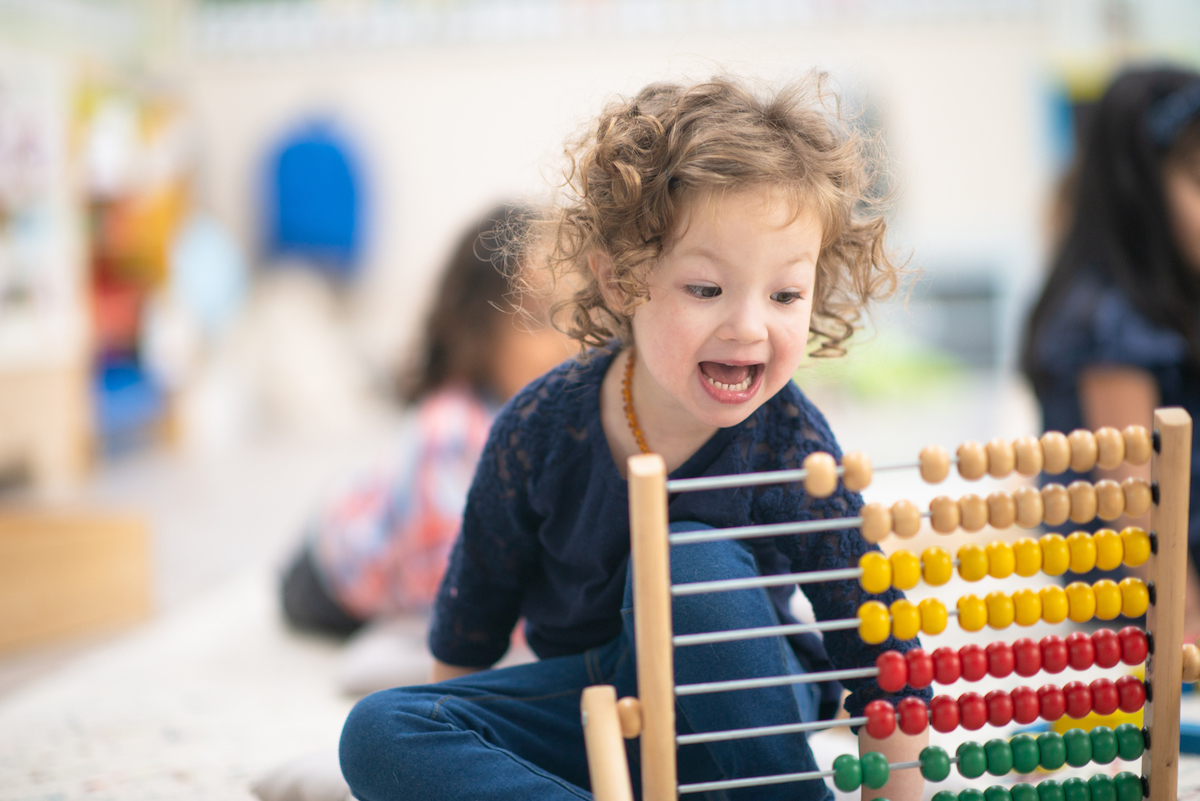
Preschool Program (3 years through Kindergarten)
In Montessori, the preschool class is typically referred to as the primary class. Two unique features of all Montessori classrooms are the multi-aged classrooms and the use of the word “work” to describe what the children are doing. The plural “works” is used to refer to the various activities in the classroom.
In the primary classroom, children from the age of 3 through kindergarten form the learning community. Primary classrooms have two main areas – the practical life area and the rug area. Typically, the practical life area has some sort of solid flooring to support work with water along with tables and chairs for works which also benefit from an easy to dry or sweep the floor. The rug area supports sensorial, math, language, and cultural works with most work done on the floor using a small rug as a child’s individually defined workspace.
The practical life area of the classroom is very important and is the foundation for all Montessori learning. It’s through practical life work that children learn to make work choices and complete the work cycle. The development of concentration and independence are the two main goals of practical life work, although such work can also help develop fine motor control and impulse control.
Elementary Program (Grade1-6)
Our elementary classroom is comfortable and homey, filled with Montessori materials designed to help concretely explain abstract ideas and allow exploration. It’s a light-filled space with large windows to bring the beauty of the out-of-doors inside.
The real beauty of our classroom comes to life when it is filled with children! As is expected of all authentic Montessori classrooms, we have a fully integrated community of multi-aged learners who share their learning through collaborative work, mentoring, and peer exchange during uninterrupted, multi-hour work periods.
The classroom is arranged into three main academic areas – mathematics and geometry, language arts including reading, writing, grammar, word studies, mechanics, and penmanship, and cultural studies which encompasses astronomy, earth science, geography, botany, zoology, and history. Cultural studies also includes peace education, along with conflict resolution skills, science, and the arts.
Children learn with joy by exploring and researching a multitude of topics which spark their interests and passions. Teachers guide and support these interests, facilitate learning opportunities with individual or small group lessons, and organically aid individual students, small groups or the entire class. Much work is collaborative, born out of shared interests, and typically these spontaneous groups include children in a wide range of ages, working and learning together. Teachers differentiate instruction, based on each child’s needs, to support and encourage individual growth.
Our class is one where freedom meets responsibility and where learning in community means social responsibility. We teach, support, and foster concepts such as social justice, kindness, human rights, mindfulness, and resilience.
Student work is assessed through both qualitative and quantitative measures. Expectations and goals are individualized based on the needs of each child. Montessori schools do not grade student work in the traditional way as grades tend not to foster opportunities to learn through multiple attempts, nor do they embrace learning through mistakes. Grades are often limiting – an A+ doesn’t encourage additional refinement or inclusion of new ideas discovered through additional research. Our goal is to open a dialogue between teachers and students in order to cultivate student growth, student reflective assessment, mastery of skill sets, and the learning of perseverance.
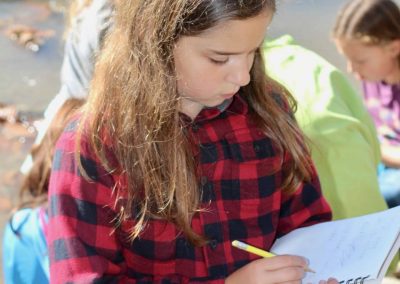
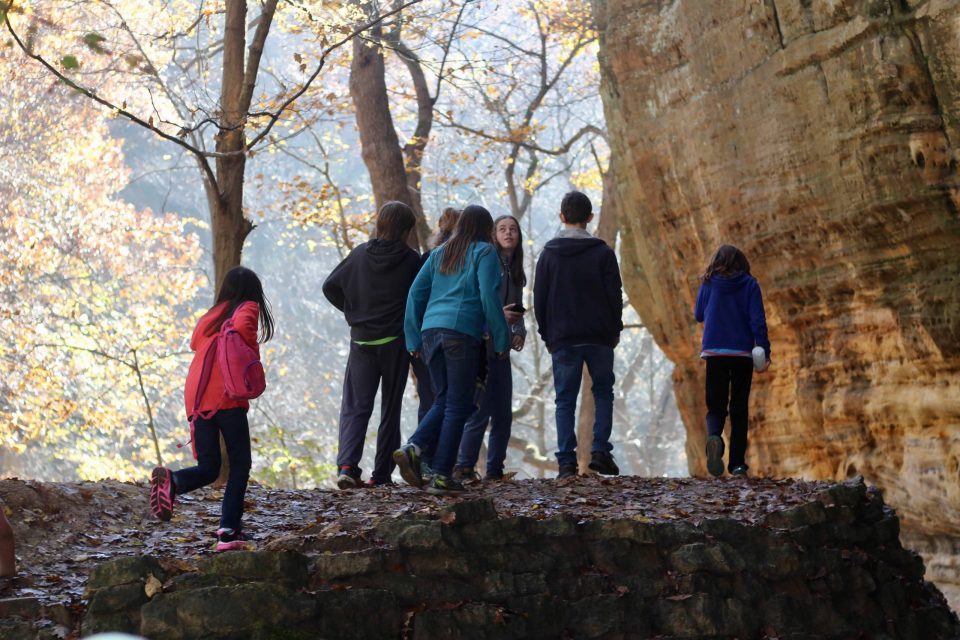
Middle School Program (Grade 7 & 8)
The middle year classroom at Montessori Habitat promotes the growth of each student through vigorous academic pursuits and vibrant community activities. While that “formally” defines our middle year classroom, what it looks like each day is a space filled with happy, industrious, messy, striving, confused, inspired adolescents!
Throughout each school year, the students work through five themed cycles. For a given year the cycles could be Forces, Structures, Power, Changes, and Balance. Using study guides (syllabi) for science, history, language arts, and personal growth, the students work together, along with their teacher to schedule due dates for both individual and group work. Within this set of assignments, there is some choice and some strict requirements. Thus this balance of internal and external expectations mimics their future schooling and careers. Each student’s math curriculum is individually designed with the teacher, the student, and the student’s family utilizing multiple resources including University of Chicago textbooks, internet resources, and trade books.
To further illustrate the concept of themed cycles as an interrelated and integrated course of study, we’ll explore more deeply the first cycle of a past year, Forces, and how the theme of “forces” relates to different areas of the curriculum:
In history coursework, the students studied the American Revolution concentrating their attention on the forces that drove the patriots to write the Declaration of Independence and begin the American Revolution. They also explored the causes, leaders, and effects of revolutions in general. This year we are describing, the students chose the French Revolution (1789) and the Russian Revolution (1917) to highlight their studies.
In literature, they chose between two novels – Red Scarf Girl by Ji-li Jiang or April Morning by Howard Fast. The students read and wrote about poems, stories, and other readings which examined the forces of power, stereotypes, metaphors, and missing voices in the literature.
In their science studies, the students learned about Newton’s Laws of Motion and the forces of electromagnetism. Through readings and experiments, they came to understand and apply these principles.
In health studies, the focus during the Forces cycle was on stress and coping strategies. This included writing and reflecting on ways that some people and things support us and others deplete us.
At the end of each cycle, the students take an extensive exam in which essay questions predominate, but also include other types of test questions such as multiple choice. These exhaustive exams help the students recognize their strengths and weaknesses for a particular cycle. Their own reflection, in addition to their teacher’s feedback, helps them move into the next cycle with a plan in place to shore up any weak spots in their learning strategies and skills and to continue to exploit their learning strengths. The goal is for students to continuously learn about themselves, and through that ever evolving self-knowledge, to deepen their understanding of what they need to grow as learners.
Homework is purposeful and designed to prepare the students to participate in collaborative classroom work the following day. Collaborative classroom work includes discussion groups as well as large and small group project work. As part of the daily homework, the students can expect to continue their math work from earlier in the day. The students have individualized math goals and will be working to achieve their goals based on their completion timeline which was agreed upon by their teacher, the student, and the parents at the student’s goal-setting meeting. Math is a subject that responds well to a steady rate of progress and working at one’s own level in math provides for each student to be working on the edge of their knowledge, growing in their math skills and understanding, each and every day. Other homework includes reading literature (either novels or selections from an anthology) as preparation for group discussions or writing projects.
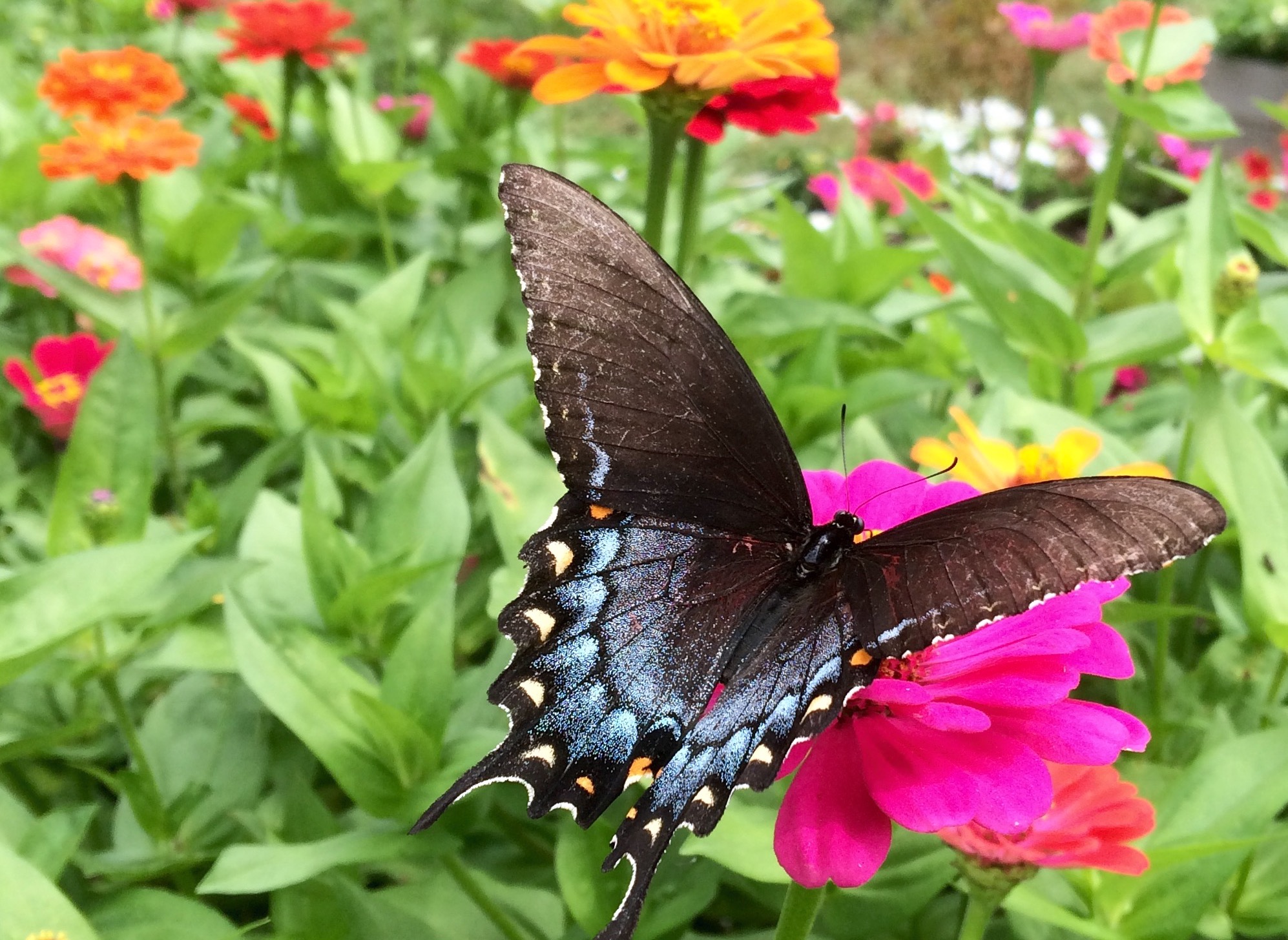
Expanding Learning
There’s so much learning that happens in all our classrooms! The students discover interests and find ways to expand their learning. Students will suggest activities, field trips, and additional resources useful to carry out their ideas. A wide variety of presentations are frequently created, from speeches to plays, to share with their classmates and teachers. Teachers also offer ideas to support the current interests students have shared or to ignite a yet-to-be discovered interest. For example, students became very interested in pollinators and the challenges specifically facing honey bees and monarch butterflies.
Through their enthusiastic learning, we developed an apiary and brought a monarch sanctuary to life. We’ve experienced great joy releasing monarch butterflies after bringing chrysalis’ into our classroom which protects them from predators and results in a much higher survival rate.
Our classroom is a creative learning environment.
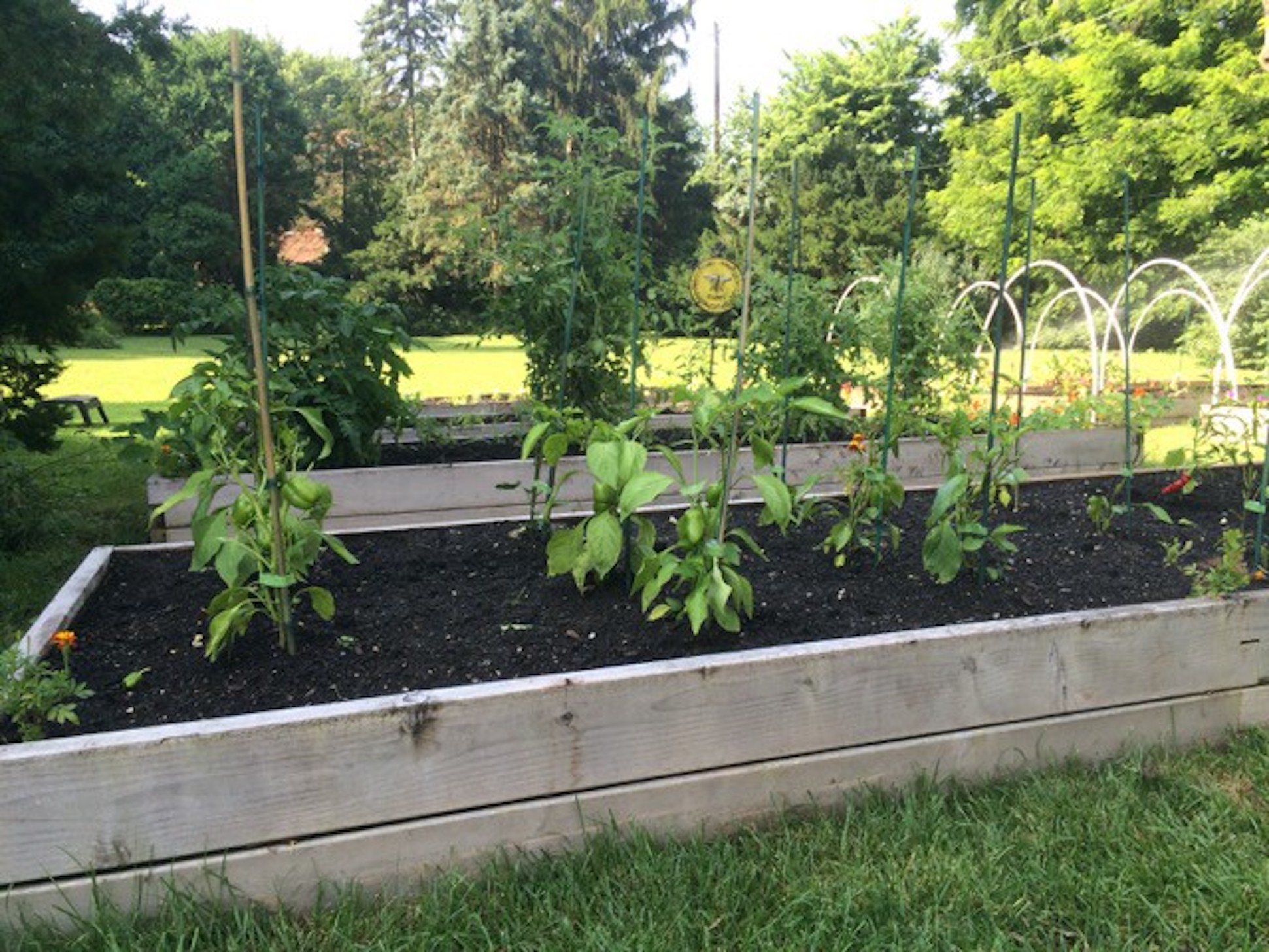
Our Gardens
There’s so much going on with our gardens! They are always evolving, ever in need of weeding, and nearly always offering us some type of bounty. They are a beautiful part of our school, filled with learning challenges, experiences, successes, and failures! They are empowering, motivating, and peaceful places!
Gardening is an optional activity for all our students. As a learning community experience, it brings together many aspects of our curriculum such as botany, zoology, history, practical life, and art, along with planning, persistence, and pleasure while giving our students an opportunity to impact our environment and to provide nourishment for people, and animals. Gardening provides authentic research opportunities to learn about the specific needs of the plants or animals we want to attract to — or away from — our garden areas.
We value the peacefulness, satisfaction, and empowerment which many children and adults experience from working with plants to create both beauty and bounty.
